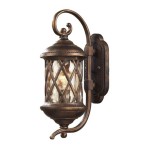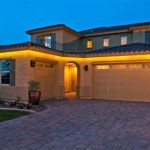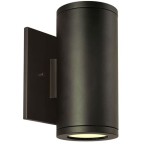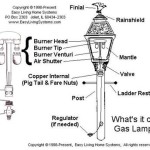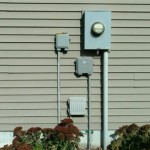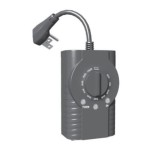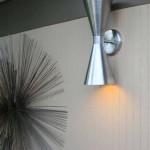Do I Need a Permit for an Outdoor Fireplace?
The allure of an outdoor fireplace is undeniable. It offers warmth, ambiance, and a focal point for outdoor gatherings. However, before embarking on the construction of this backyard amenity, it is crucial to understand the regulatory landscape surrounding outdoor fireplaces. The need for a permit is a frequent concern for homeowners, and the answer is rarely a simple "yes" or "no." Numerous factors influence whether a permit is required, ranging from local ordinances to the type of fireplace being installed.
This article aims to provide a comprehensive overview of the considerations involved in determining if a permit is necessary for an outdoor fireplace project. It will explore the various levels of government that may impose regulations, discuss the types of fireplaces that typically require permits, and highlight the importance of contacting local authorities for accurate and up-to-date information. Ignoring permit requirements can lead to costly fines, project delays, and even the removal of the improperly installed fireplace. Therefore, understanding and adhering to local regulations is a vital first step in any outdoor fireplace undertaking.
Understanding the Jurisdictional Hierarchy
The regulation of outdoor fireplaces is typically layered, originating from various levels of government. Understanding this hierarchy is essential for identifying all applicable rules and regulations. The regulatory structure generally involves three primary levels: federal, state, and local.
At the federal level, regulations directly impacting outdoor fireplaces are relatively limited. The federal government primarily focuses on environmental protection and air quality. The Environmental Protection Agency (EPA) may have indirect influence through regulations on wood-burning appliances, but these often apply more directly to indoor wood stoves and fireplaces. Federal guidelines may influence state and local regulations regarding emissions and air quality control, particularly in areas with air quality concerns.
State regulations vary significantly depending on the geographical location. Some states have comprehensive building codes that dictate specific requirements for outdoor structures, including fireplaces. These codes might address issues such as setbacks from property lines, chimney heights, and fire safety standards. Other states may have minimal or no statewide regulations, leaving the responsibility to local municipalities. It is important to consult the relevant state government agencies or building code resources to determine the presence and scope of any applicable state-level regulations.
Local regulations, often enacted by cities, counties, or townships, are usually the most pertinent when determining the need for a permit. These regulations tend to be the most specific and address local conditions and concerns. Local ordinances may cover a wide range of aspects, including: permitted types of fuel (wood, gas, propane), required distances from structures and vegetation, limitations on open burning during certain times of the year, and specific requirements for fire suppression equipment. Local zoning ordinances may also dictate where an outdoor fireplace can be located on a property. Contacting the local building department or planning office is crucial to obtaining the most accurate and up-to-date information regarding local requirements.
Types of Outdoor Fireplaces and Permit Requirements
The type of outdoor fireplace being considered significantly influences the likelihood of requiring a permit. Different fireplace types pose varying levels of risk and complexity, which are reflected in the regulatory requirements. Common types of outdoor fireplaces include permanent masonry fireplaces, prefabricated fire pits, and portable fire pits.
Permanent masonry fireplaces are the most likely to require a permit due to their size, permanence, and potential impact on property lines and fire safety. These fireplaces are constructed from brick, stone, or concrete and are typically integrated into the landscape. The construction process involves building a foundation, chimney, and firebox, all of which necessitate adherence to strict building codes. Local building departments often require detailed plans and inspections to ensure the fireplace complies with safety standards. These inspections may cover structural integrity, fire resistance, and proper chimney design to prevent smoke hazards. Furthermore, masonry fireplaces may be subject to property tax assessments due to their permanent nature.
Prefabricated fire pits offer a more convenient alternative to masonry fireplaces. These units are typically constructed from metal or pre-cast concrete and are designed for easy installation. While prefabricated fire pits are generally less regulated than masonry fireplaces, a permit may still be required, particularly if they are connected to a gas line. Connecting a fire pit to a natural gas or propane line involves plumbing and gas line installation, which often necessitates a permit and inspection by a qualified professional to ensure safety and compliance with gas codes. Even if a permit is not strictly required, it is crucial to follow the manufacturer's installation instructions carefully and prioritize safety.
Portable fire pits are generally the least regulated type of outdoor fire feature. These units are designed to be easily moved and typically burn wood or propane. Due to their portability and smaller size, they are often exempt from permit requirements. However, it is still important to exercise caution when using portable fire pits. Maintaining a safe distance from structures, vegetation, and flammable materials is crucial. Furthermore, local fire departments may impose restrictions on open burning during certain times of the year, such as during periods of high fire risk. Always check with the local fire department for any temporary burn bans or restrictions before using a portable fire pit.
Key Factors Determining Permit Necessity
Beyond the type of fireplace, several other factors influence the determination of whether a permit is necessary. These factors relate to safety, environmental impact, and potential impacts on neighboring properties. Property size and zoning regulations are also key considerations.
Safety is a paramount concern for building departments and fire marshals. Regulations are often designed to minimize the risk of fire hazards and ensure the safety of residents and surrounding properties. Factors such as the proximity of the fireplace to structures, trees, and other flammable materials are carefully considered. Requirements for fire extinguishers, spark arrestors, and other fire suppression equipment may be mandated. Chimney height regulations are also common, aiming to ensure proper smoke dispersal and prevent smoke from entering neighboring properties. The presence of flammable materials near the intended fireplace location will almost certainly trigger stricter permit requirements.
Environmental impact is another growing concern influencing permit requirements. Regulations may focus on minimizing air pollution and protecting natural resources. Restrictions on burning certain types of fuels, such as treated wood or large quantities of leaves, may be imposed. In areas with air quality concerns, stricter regulations on wood-burning appliances may be in place. Some municipalities may encourage or even require the use of cleaner-burning technologies, such as propane or natural gas, to reduce emissions. Noise pollution is also a potential concern, particularly in residential areas. Local ordinances may restrict the hours during which outdoor fireplaces can be used to minimize disturbance to neighbors.
Property lines and zoning regulations play a critical role in determining where an outdoor fireplace can be located and whether a permit is required. Setback requirements dictate the minimum distance that a structure must be located from property lines. These requirements are designed to prevent conflicts between neighbors and ensure adequate access for emergency services. Zoning regulations may also specify permitted uses for different areas of a property. For example, an outdoor fireplace may be prohibited in certain zones, such as conservation areas or areas with environmental sensitivities. Before commencing any work, it is crucial to consult the local zoning map and verify that the intended location complies with all applicable zoning regulations.
Homeowners associations (HOAs) may also impose restrictions on outdoor fireplaces, even if local government regulations are minimal. HOA rules often address aesthetic concerns, noise levels, and other factors that can impact the community. It is important to review the HOA's covenants, conditions, and restrictions (CC&Rs) to determine if any specific requirements apply to outdoor fireplaces. Obtaining approval from the HOA before starting construction is often necessary to avoid potential conflicts and fines.
Navigating the complexities of outdoor fireplace regulations requires diligence and proactive communication with local authorities. Contacting the local building department, planning office, and fire department is essential to obtain accurate and up-to-date information. Discussing the specific project with these agencies can help identify all applicable requirements and avoid costly mistakes. Remember to document all communications and retain copies of any permits or approvals obtained. Failure to comply with local regulations can result in fines, project delays, and even the removal of the improperly installed fireplace. By understanding the jurisdictional hierarchy, considering the type of fireplace, and addressing key factors related to safety, environmental impact, and property lines, homeowners can ensure a smooth and compliant outdoor fireplace project.

All About Backyard Outdoor Fireplaces Vanderwall
City Of Moorhead Recreational Fires

Your Guide To Safe Outdoor Fires On Property Clarington

Can I Have A Fire Pit In My Backyard Laws Restrictions By State Outland Living

Do I Need A Permit For Fire Pit In Randolph Massachusetts Jm Mento Landscape Design

How Much Do Outdoor Fireplaces Cost Trevor S Landscaping

Burn Permit

Outdoor Fireplaces Keep You Warm In All Seasons Hearthside

How Much Does It Cost To Build An Outdoor Fireplace Key Factors The Torch Guys

Open Burning Laws In Louisville
Related Posts
